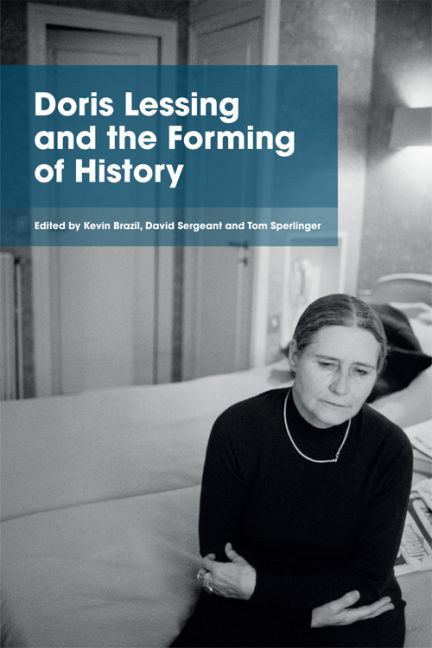Book contents
- Frontmatter
- Contents
- Acknowledgements
- Timeline
- Introduction
- 1 Early Lessing, Commitment, the World
- 2 ‘I'm an adolescent. And that's how I'm going to stay’: Lessing and Youth Culture 1956–1962
- 3 Sequence, Series and Character in Children of Violence
- 4 The Politics of Form: The Golden Notebook and Women's Radical Literary Tradition
- 5 Readers of Fiction and Readers in Fiction: Readership and The Golden Notebook
- 6 From The Grass is Singing to The Golden Notebook: Film, Literature and Psychoanalysis
- 7 ‘funny thing laughter, what's it for?’: Humour and Form in Lessing's Fiction,A
- 8 Lessing and the Scale of Environmental Crisis
- 9 Lessing and Time Travel
- 10 Lessing's Interruptions
- 11 Lessing's Witness Literature
- 12 A Catastrophic Universe: Lessing, Posthumanism and Deep History
- Select Bibliography
- Notes on Contributors
- Index
3 - Sequence, Series and Character in Children of Violence
Published online by Cambridge University Press: 26 May 2017
- Frontmatter
- Contents
- Acknowledgements
- Timeline
- Introduction
- 1 Early Lessing, Commitment, the World
- 2 ‘I'm an adolescent. And that's how I'm going to stay’: Lessing and Youth Culture 1956–1962
- 3 Sequence, Series and Character in Children of Violence
- 4 The Politics of Form: The Golden Notebook and Women's Radical Literary Tradition
- 5 Readers of Fiction and Readers in Fiction: Readership and The Golden Notebook
- 6 From The Grass is Singing to The Golden Notebook: Film, Literature and Psychoanalysis
- 7 ‘funny thing laughter, what's it for?’: Humour and Form in Lessing's Fiction,A
- 8 Lessing and the Scale of Environmental Crisis
- 9 Lessing and Time Travel
- 10 Lessing's Interruptions
- 11 Lessing's Witness Literature
- 12 A Catastrophic Universe: Lessing, Posthumanism and Deep History
- Select Bibliography
- Notes on Contributors
- Index
Summary
In her final book, Alfred and Emily (2008), Doris Lessing returned to a character who had been represented repeatedly and in different ways over her long writing life: the mother. The second part of Alfred and Emily – a memoir following a fictional reimagining of her parents’ lives – opens with the claim: ‘I have written about my father in various ways; in pieces long and short, and in novels. He comes out clearly, unambiguously, all himself’ (152). Of her mother, in contrast, she writes:
Nothing that she ever told or was said about her, or one could deduce from her in that amazing girlhood, so busy, so full of achievement, or of her nursing years, about which we had the best of witnesses, my father himself, or the years in Persia, so enjoyable and so social, nothing, anywhere, in all this matches up with what my mother became.
Nothing fits, as if she were not one woman but several. (156)That the self, especially the female self, is not one but several, is one of Lessing's most pervasive themes. But the syntax of the first sentence here specifies one particular way in which multiple selves are conceptualised. It begins by negating three ways of learning about her mother (telling, deducing, witnessing), before listing a series of stages in her life, ‘girlhood’, ‘nursing years’, ‘Persia’, each given two attributes, the first and last echoing through the repetition of ‘so … so …’, with the knowable father whose act of ‘witness’ is not enough at the centre. The nascent paratactic sequence is then terminated by the repetition of ‘nothing’, returning us to the beginning of the sentence, while the dispersing ‘anywhere’ implies that this repetitive series could nevertheless continue, possibility infinitely.
This structuring of her mother's unknowability in the form of a sequence which fails to cohere is accentuated by the inclusion within Alfred and Emily of a number of photographs, mostly of her parents, some of which had already been published in the autobiographies Under My Skin (1994) and Walking in the Shade (1997).
- Type
- Chapter
- Information
- Doris Lessing and the Forming of History , pp. 39 - 55Publisher: Edinburgh University PressPrint publication year: 2016



